Tunis looked like a city made of chalk and cobalt. From our hotel balcony the predominantly low rise city shimmered in an early African sun, stretching in an immense chalky white arc along the brilliant blue waters of the Mediterranean Sea. The square squat buildings placed in formal rows, interspersed with gleaming mosque domes, together with the spruce and pines placed strategically along the road ways reminded me of a giant Islamic Monopoly set. It was exciting to be in Africa and it all looked very exotic.
We usually find that paying the additional price for a Club Room in a hotel is very worthwhile, providing a quiet place to read and use computers, have breakfast and coffee and as well as an evening drink. The Sheraton Hotel Tunis Club facilities however were very disappointing. The service was half hearted and the breakfast food was less than ordinary. The evening drinks just looked plain tired, a bit like the staff, with re-opened bottles of wine and stale finger food which looked like it had been left out from the day before.
We decided very quickly that morning to have breakfast in the main buffet area. It was very good with great variety and some wonderful Tunisian local foods. We particularly liked the vegetable dishes, especially the delicious medley of grilled green capsicum, eggplant and onions. And the fresh strawberry juice was a taste explosion!
At breakfast, Alan struck up an amiable conversation with Amr, an Egyptian doctor who like many of the guests was part of a medical conference being held at hotel. Amr was passionate about his home country and was very concerned about the political turmoil his country was enduring. A charming man, he was fascinating to talk with and he and his colleague (whose name we did not know) were friendly faces during the next few days we were in Tunisia. We began to think we would like to visit Egypt in the future when hopefully the political situation would have improved. At the time however, Australian journalist Peter Gresta working for Al Jazeera, was imprisoned in Egypt for allegedly supporting the then ousted but democratically elected Muslim Brotherhood. Having probably used some of our "nine lives" in Pakistan, we decided that perhaps we would leave our Egyptian travels for a little while...
Ms Fawzia was bursting with enthusiasm about our tour around Tunis for the day. We had of course done a lot of reading about what we would like to see and were particularly interested in visiting the "must see" Bardo Museum, the Carthage ancient ruins, Sidi Boud Said (where we were looking forward to having lunch at the well known Cafe Sidi Chaaabne), La Goulette and the port of Bizerte in the north of Tunisia. We had also hoped that there may have been an exhibition of Auguste Macke's paintings of Tunisia, given there was a memorial week of the 100 years since he and famous artist Paul Klee lived and painted their beautiful works in Tunis.
"Ahh, you are sooo lucky" she beamed. "You have a very, very good driver. He was the chosen driver for our diplomats and he speaks excellent English". Fawzia's enthusiasm was infectious and we enjoyed our briefing. Talking with her however and watching her gesticulations and mannerisms - and had we not been in an Islamic country - we could have sworn that she could have been of Jewish origin. We were however to find out later that there is a sizeable Jewish population living in Tunisia.
Ahmed (name witheld) was indeed a lovely young man and a good steady driver but sadly for all of us, his English was very rudimentary and his knowledge of Tunis city seemed to be even poorer. We certainly did not blame him though as he did try his best to please us. Also, in fairness, we had decided that we didn't need a guide for the full day, just an English speaking driver who could take us to the places we wanted to see. And I guess we didn't actually specify that we needed someone who knew their way around the special sites of Tunis...
Anyway, we were keen to explore Tunis and its surrounds, although we would not explore central Tunis until our last day in Tunsia.
Tunis, the capital city of Tunisia is located in north-east on the Lake of Tunis, and is connected to the Mediterranean Sea's Gulf of Tunis by a canal which terminates at the port of La Goulette. The greater area of the city incorporates an area of some 300,000 hectares and its urban growth is estimated to be increasing at a rate of 500 hectares per year. Tunis boasts a population of around 650,000 (2013) and around 2.7 million in the surrounding greater urban area.
The main economy of the Tunis is that of tertiary industry. Products include textiles, carpets and olive oil. The city is the largest financial centre in Tunisia hosting the headquarters of 65% of the country's financial companies. Being regarded as one of the more stable Arab nations in northern Africa, tourism provides a significant portion of the city's income*. Cruise ship travel through the port of La Goulette has become an especially popular sector of the tourism industry.
BIZERTE
Our first destination was Bizerte, an old port town in the north of Tunisia and some 65 kilometers from Tunis city. Our drive took us through the outskirts of Tunis. We found it interesting but I guess not all that surprising that the country was so close to Sicily but so very different. In some of the outer suburbs we could have been in Pakistan or even in Iran with the endless rows of blackened roller door clad shops, messy machinery sheds and concrete block housing.
Conversely, the more exclusive suburbs reminded us of opulent districts in any city. We could have been in the affluent eastern suburbs of Sydney Australia, or those suburbs inhabited by wealthy politicians in Jakarta, Indonesia - or indeed in Islamabad, Pakistan. And like many emerging nations, the enormous difference between living standards of the wealthy and the poor was staggering - and concerning.
Bizerte is the the oldest and most European city in Tunisia, being founded around 1100 BC by Semitic Phoenicians from Tyre. Its strategic position as a naval port on the Mediterranean Sea resulted in Bizerte being the last town to remain under French control after the rest of Tunisia became independent from France. Today, it is still home to several large Tunisian military bases.
With its beautiful scenery, forests, long sandy beaches and a major yachting marina and port, it is not all surprising that tourism is the most significant industry for Bizerte. The town however also supports some manufacturing industries such as textiles, auto parts and cookware as well as agricultural industries such as fruit, vegetables and wheat, and there is also a significant fishing industry.
Ahmed dropped us off at the resort area of La Corniche where we strolled along the attractive waterside boulevard, somewhat surprised by the number of French named hotels. It did seem strange to be in an Arab nation which is still largely sign posted in French and despite being independent for almost 60 years, still has such a strong French presence.
Like Tunis, all the buildings were painted brilliant white with attractive bright cobalt blue trimming, reflecting the brilliant blue of the surrounding clear Mediterranean waters. Beautiful cascades of brilliantly flowering red and pink Bouganvilleas, weeping Australian Eucalypts, clipped pine trees and the old faithful, ubiquitous Oleanders made for an very lovely setting.
While the beauty and wealth of La Corniche was very much in your face, so were the huge rubbish heaps being raided by numerous pitifully thin stray cats. We are devoted animal lovers and we were deeply saddened to see the plight of these poor animals trying to eke out a life in this extremely wealthy resort town.
It was a strange feeling that we had throughout our travels in Tunisia. Whilst the country looked happy and relatively prosperous, it seemed if you scratched the surface and looked a little closer, you may find a totally different situation. Perhaps this is an unfair observation as we were only in Tunsia for a few days - but the impression stayed with us, even during our long travels inland the following day.
The main tourist centre of Bizerte is located around a lovely harbour which connects the Mediterranea Sea to the inland via the Canal de Bizerte. Old patina clad buildings and an ancient Spanish castle are located right on the water's edge. Colourful fishing boats and yachts, hotels and numerous waterside cafes, as well as lively street music add to the great ambiance and charm of the old port town.
It was great fun to wander around Bizerte absorbing the atmosphere of a totally unfamiliar environment. It was not overly busy and the local people were friendly and helpful. "Le Phenicien", a large replica of an old sea going vessel which was converted into a restaurant, proved to be a life saver. We were in need of a cold drink and we thoroughly enjoyed ourselves just spending some time to sit and watch the Bizerte world go by. The rather garish Le Phenicien also had clean toilets.
Thankfully we had no problem finding our driver Ahmed and soon we were speeding off to our next destination of the famous La Goulette, the port for the city of Tunis.
LA GOULETTE
La Goulette was first developed as a port and strategic outpost in the 7th century by the Arabs after they had captured Tunis. In 1535, the Spanish King Charles V built a fort which was later destroyed by the Ottomans who built a massive castle or kasbah. The name "La Goulette" derives from the French term for "gullet" or "throat" which describes the channel which connects Lake Tunis to the sea front. Today La Goulette is a major passenger port and terminal, well known for its tourism and fishing industries.
La Goulette was just a nice place to visit and enjoy coffee in one of its numerous street cafes which lined the waterfront edge. It was also a place to reflect on Tunisia's religious tolerance, with around half of the women wearing headscarves or hijabs over tunics, and the others modernly dressed in jeans and shirt tops. Not surprisingly for us (we had seen this dichotomy over and over again in Iran), a lot of the young men wore extremely tight jeans and body hugging t-shirts.
We had spent about an hour in La Goulette, wandering around the rather tourist oriented shops of the township when to our delight we came across a large fresh fish market. As our readers would know, we just love visiting local shops and markets as for us, it provides a valuable insight into how the local people live and what they eat. The vendors were both welcoming and helpful, and seemed to enjoy our curiosity about the types of fish caught. Again, and like the Sicilian Palermo markets, a lot of the fish varieties were very familiar, with cod, mackerel, tuna, trevally, mullet, bream and snapper on display. There was even one of our very favourite fish - a John Dory for sale.
NOT THE BARDO MUSEUM
Time was moving on and we began to wonder when we would be seeing the Carthage ruins and the Bardo Museum when Ahmed suddenly stopped our car and pointed toward a rather handsome looking building which looked more like an old cathedral rather than a museum. And it even we knew it was not the ancient city ruins of Carthage. Ahmed pointed toward the building and when we asked if it was the Bardo Museum, or if it was nearby, he simply answered "Yes, yes".
We dutifully paid a reasonable sum of money to a bored looking man at an Arabic signed desk outside the building and asked him if this was the Bardo Museum - which of course was a bit stupid as he didn't speak any English. He grunted, nodded then pointed toward the rear of the building. We searched everywhere and asked several people who also didn't speak any English. Of course we didn't find anything that looked slightly like a museum so we took a look inside the cathedral building. It was decked with some lovely frescoes but within 15 minutes we had seen as much as we possibly could and gave up on seeing the famous Bardo - a great shame as we had heard it is really worthwhile visiting.
We later found out that what we saw was in fact the 1884 French built L'Acropolium, a cathedral dedicated to the 13th century Saint King Louis who died on the beach at Carthage in 1270 during the ill fated eighth crusade. Legend suggests that St Louis was hoping to convert the Hafsid ruler but instead his troops wearied and died in the extreme heat. Today the cathedral is used for exhibitions and concerts. Hmm, not quite the Bardo but it was quite nice...
SIDI BOUD SAID
We may have not reached all our places of interest but it certainly was a very full day. It was now mid afternoon and we were heading toward Sidi Boud Said where we hoped to have at least a cool drink at the famous Cafe Sidi Chaaabne.
Sidi Boud Said is located in a glorious setting on the Mediterranean coastline about 20 kilometers from Tunis. Named after the religious figure Abou Said ibn Khalef ibn Yahia Ettamini el Beiji (we guessed just "Said" for short), the town is a major tourist attraction and like Bizerte, is well known for its brilliant blue and white buildings. It is more interestingly known however as a town of artists and scholars. We could well understand how the beautiful setting of could inspire the great artists August Macke and Paul Klee.
Our efforts in communicating with Ahmed were failing miserably and instead of heading to our cafe, Ahmed dropped us off at the local Sidi Boud Said markets. To our dismay, they were about as bad as touristy markets can get and were jam packed with more Europeans and cruise ship tourists than we had seen all day. From the few photographs I took, I estimate that we lasted no longer than fifteen minutes before we had had quite enough of the tacky markets and returned to our car.
THE CAFE THAT WASN'T AND THE BEER SHOP THAT NEARLY WASN'T
You can easily tell when someone doesn't have clue where they are going. Poor Ahmet's brow furrowed and after driving around every headland in Sidi Boud Said, he finally called one of his colleagues - which didn't help either.
Well, like the Carthage Ruins and the Bardo Museum, our lunch or even a drink at the cafe wasn't going to happen either so we resignedly asked him to take us back to our hotel in Tunis - with the one proviso - that he dropped us off at a supermarket where we could buy some beer.
This last request proved to be almost as difficult as the last three, especially as Ahmed said that being a devout Muslim, he of course didn't drink alcohol. After much searching however, we found our first supermarket - which had no alcohol at all. The staff was not at all helpful but finally a weary looking staff member reluctantly told us we had to drive to another supermarket some kilometers away. Under normal circumstances, I think we would have just given in and called it a day but by then the exasperated Alan was absolutely determined that he was going to buy beer no matter how far we had to drive.
I must say that Ahmed was very co-operative and dutifully drove us for a very long way to Supermarket No. 2 where to Alan's delight he found cases of beer for sale. Of course it was not cold but by then any beer was sounding good and anyway, it was great fun just to wander around a Tunisian supermarket. We were in our element at long last.
On the way back to out hotel, we of course thanked our young driver for our (not-so-successful) day around-Tunis.
"I have only one comment to make about you Ahmed" joked Alan. "Next time we will ask for a non-Muslim driver". Poor Ahmed was looking confused. "A non-Muslim driver would know where to buy the alcohol" he quipped.
For the first time that day Ahmed seemed to fully understand our English, laughed and wholeheartedly agreed! I bet that he was thinking the same "Next time, I'll make sure I get Tunisian speaking non-drinkers....".
* On 20th March 2015, a group of Islamic State Terrorists attacked the Bardo Museum in Tunis, killing 20 tourists and three Tunisians, including a bus driver and a policeman.
On 26th June 2015, a lone gunman dressed as a swimmer shot dead 38 mostly British tourists on the resort beach of Sousse, Tunisia.
The shocking events have the potential to decimate the Tunisian tourist industry and to destabilise an already fragile government.
Tunis: A City of Brilliant White & Cobalt Blue
Sunday, May 11, 2014
 Tunis, Tunisia
Tunis, Tunisia
Other Entries
-
2A Pastel Morning - Our Journey Begins
May 029 days prior Sydney, Australiaphoto_camera13videocam 0comment 0
Sydney, Australiaphoto_camera13videocam 0comment 0 -
3Voyage Shanghai
May 038 days prior Shanghai, Chinaphoto_camera13videocam 0comment 0
Shanghai, Chinaphoto_camera13videocam 0comment 0 -
4A Close Connection or Catatonic in Catania
May 047 days prior Catania, Sicily, Maltaphoto_camera5videocam 0comment 0
Catania, Sicily, Maltaphoto_camera5videocam 0comment 0 -
5"Long Legged Italy Kicked Poor Sicily....."
May 047 days prior Catania, Italyphoto_camera6videocam 0comment 0
Catania, Italyphoto_camera6videocam 0comment 0 -
6Under the Spell of Mt Etna
May 056 days prior Catania, Italyphoto_camera31videocam 0comment 0
Catania, Italyphoto_camera31videocam 0comment 0 -
7Historic Neapolis OR "A Body Floats in a Fluid..."
May 065 days prior Syracuse, Italyphoto_camera11videocam 0comment 0
Syracuse, Italyphoto_camera11videocam 0comment 0 -
8Idyllic Ortygia: Of Legends and Nymphs
May 065 days prior Syracuse, Italyphoto_camera7videocam 0comment 0
Syracuse, Italyphoto_camera7videocam 0comment 0 -
9Images of Gorgeous Ortygia
May 074 days prior Ortygia, Italyphoto_camera15videocam 0comment 0
Ortygia, Italyphoto_camera15videocam 0comment 0 -
10"And the Mountains Danced As If Drunk......"
May 074 days prior Agrigento, Italyphoto_camera19videocam 0comment 0
Agrigento, Italyphoto_camera19videocam 0comment 0 -
11"Akragas - Most Beautiful City Mortals Ever Built"
May 083 days prior Agrigento, Italyphoto_camera16videocam 0comment 0
Agrigento, Italyphoto_camera16videocam 0comment 0 -
12A Quaint Little B & B Called the Antichi Catoi
May 083 days prior Agrigento, Italyphoto_camera8videocam 0comment 0
Agrigento, Italyphoto_camera8videocam 0comment 0 -
13Agrigento to Palermo - The Sicilian Way.......
May 092 days prior Palermo, Italyphoto_camera8videocam 0comment 0
Palermo, Italyphoto_camera8videocam 0comment 0 -
14Photo Album of The Magnificent Grand Hotel Igiea
May 092 days prior Palermo, Italyphoto_camera8videocam 0comment 0
Palermo, Italyphoto_camera8videocam 0comment 0 -
15Palermo: A Quilted History, A Fusion of Cultures
May 092 days prior Palermo, Italyphoto_camera24videocam 0comment 0
Palermo, Italyphoto_camera24videocam 0comment 0 -
16Treasures of the Conca D'Oro: Monreale & Cefalu
May 092 days prior Palermo, Italyphoto_camera16videocam 0comment 0
Palermo, Italyphoto_camera16videocam 0comment 0 -
17Farewell Sicily OR A Shaky Flight to Tunisia.
May 101 day prior Tunis, Tunisiaphoto_camera5videocam 0comment 0
Tunis, Tunisiaphoto_camera5videocam 0comment 0 -
18Tunisia Profile: Phoenicians to the Arab Spring
May 11earlier that day Tunis, Tunisiaphoto_camera5videocam 0comment 0
Tunis, Tunisiaphoto_camera5videocam 0comment 0 -
19Tunis: A City of Brilliant White & Cobalt Blue
May 11 Tunis, Tunisiaphoto_camera21videocam 0comment 0
Tunis, Tunisiaphoto_camera21videocam 0comment 0 -
20Toward the Algerian Border: Destination Le Kef
May 121 day later Tunis, Tunisiaphoto_camera48videocam 0comment 0
Tunis, Tunisiaphoto_camera48videocam 0comment 0 -
21Tunis: Medinas, Mosques, Cafes & Razor Wire
May 132 days later Tunis, Tunisiaphoto_camera10videocam 0comment 0
Tunis, Tunisiaphoto_camera10videocam 0comment 0 -
22"If You Love Ladakh, You Will Just ADORE Morocco!"
May 143 days later Casablanca, Moroccophoto_camera18videocam 0comment 0
Casablanca, Moroccophoto_camera18videocam 0comment 0 -
23Morocco Profile: Ancient Berbers - The Arab Spring
May 154 days later Fes, Moroccophoto_camera4videocam 0comment 0
Fes, Moroccophoto_camera4videocam 0comment 0 -
24Meknes & Volubilis: The Beautiful People Go to Fes
May 154 days later Fes, Moroccophoto_camera25videocam 0comment 0
Fes, Moroccophoto_camera25videocam 0comment 0 -
25Fes: At Last Macke's Medina and the Elusive Donkey
May 165 days later Fes, Moroccophoto_camera29videocam 0comment 0
Fes, Moroccophoto_camera29videocam 0comment 0 -
26Across the Atlas: Auguste Macke's Mann mit Esel"!!
May 176 days later Midelt, Moroccophoto_camera25videocam 0comment 0
Midelt, Moroccophoto_camera25videocam 0comment 0 -
27Tribulations of the Trilobites
May 187 days later Midelt, Moroccophoto_camera12videocam 0comment 0
Midelt, Moroccophoto_camera12videocam 0comment 0 -
28Over the High Atlas: The Camel Man and The Storm
May 187 days later Tinghir, Moroccophoto_camera45videocam 0comment 0
Tinghir, Moroccophoto_camera45videocam 0comment 0 -
29A Smashing Start: How Often Does the Sahara Flood?
May 198 days later Merzouga, Moroccophoto_camera33videocam 0comment 0
Merzouga, Moroccophoto_camera33videocam 0comment 0 -
30Happy in the Sahara: Desert Foxes & Fossils
May 209 days later Merzouga, Moroccophoto_camera28videocam 0comment 0
Merzouga, Moroccophoto_camera28videocam 0comment 0 -
31Ouzina - A Desert Town With No Streets
May 2110 days later Ouzina, Moroccophoto_camera23videocam 0comment 1
Ouzina, Moroccophoto_camera23videocam 0comment 1 -
32To Zagora: Deserts, Floods and Hostile Borders
May 2211 days later Zagora, Moroccophoto_camera22videocam 0comment 0
Zagora, Moroccophoto_camera22videocam 0comment 0 -
33A Day Around Zagora OR Just Hamadu and Me
May 2312 days later Ouarzazate, Moroccophoto_camera19videocam 0comment 0
Ouarzazate, Moroccophoto_camera19videocam 0comment 0 -
34Ouarzazate: Lawrence of Arabia and More......
May 2413 days later Tizi-n-Tichka, Moroccophoto_camera26videocam 0comment 0
Tizi-n-Tichka, Moroccophoto_camera26videocam 0comment 0 -
35Where the Sun Sets OR a Brush with a Cobra!
May 2514 days later Marrakech, Moroccophoto_camera12videocam 0comment 0
Marrakech, Moroccophoto_camera12videocam 0comment 0 -
36Finding FedEx Freight For Our Fragile Fossils
May 2615 days later Rome, Italyphoto_camera6videocam 0comment 0
Rome, Italyphoto_camera6videocam 0comment 0 -
37Palatine: Foundations of the Eternal City of Rome
May 2716 days later Rome, Italyphoto_camera24videocam 0comment 0
Rome, Italyphoto_camera24videocam 0comment 0

 Tunis, Tunisia
Tunis, Tunisia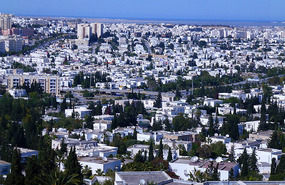
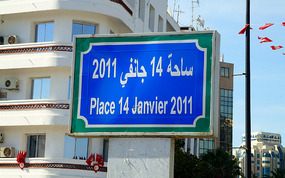
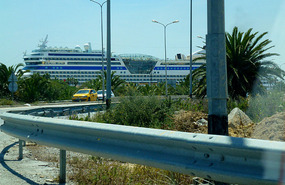
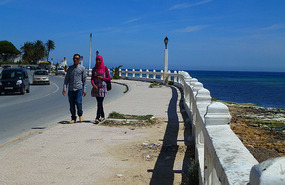
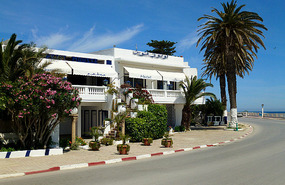
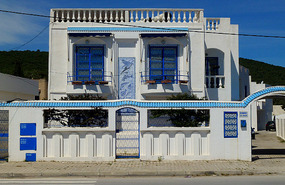
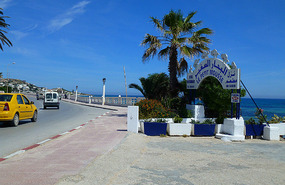
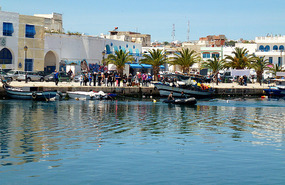
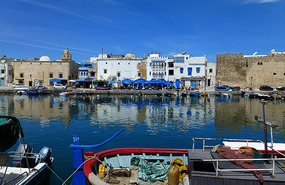
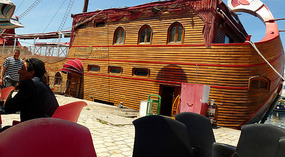


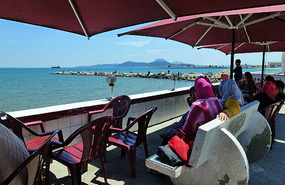
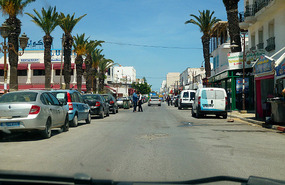
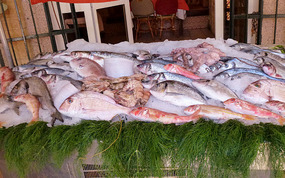

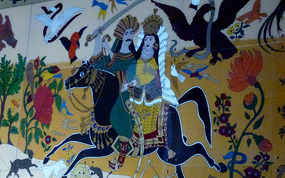
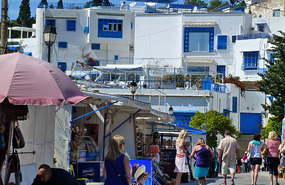
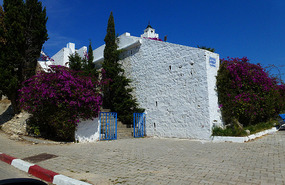
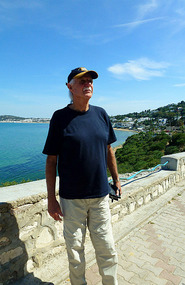
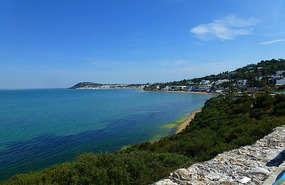






2025-05-22